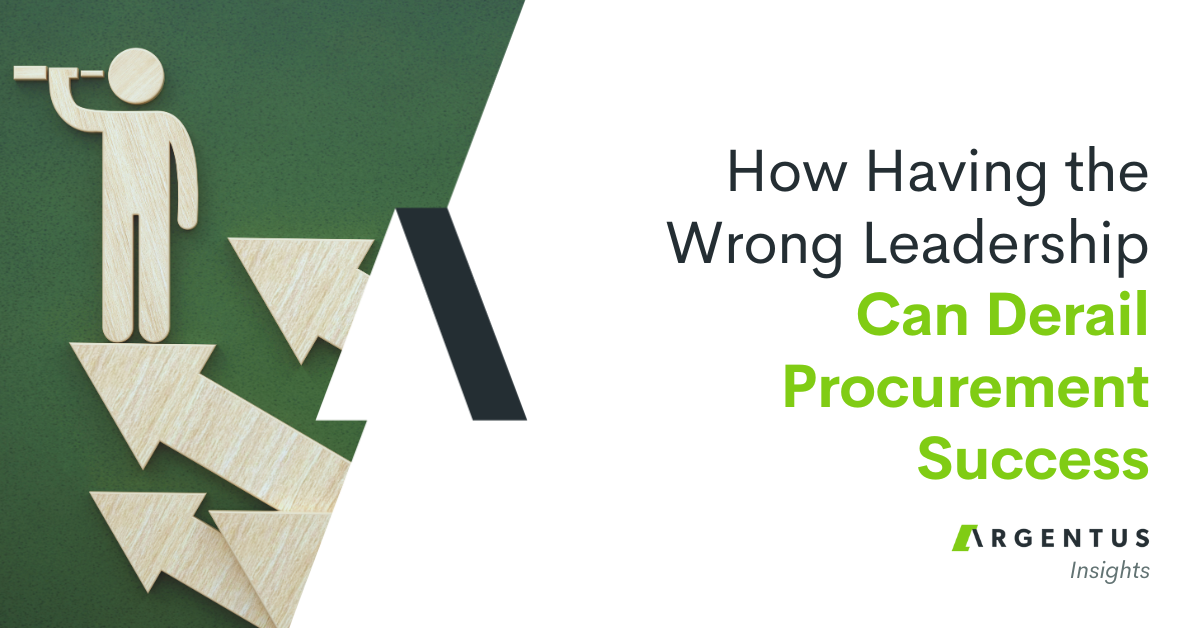It turns out, quite a lot.

One of our ongoing themes on the Argentus blog is the way in which Supply Chain and Procurement – the areas we recruit for – are changing. Businesses are placing different expectations on the function than they used to. The deliverables are changing. So are the skills required to do the job.
Nowhere is this being felt more-so than in Procurement. Companies have more data than ever at their fingertips. They have more tools than ever to automate the more transactional, administrative purchasing activities that used to define Procurement, and – as Procurement guru and host of the Art of Procurement podcast Philip Ideson put it in our interview last year – Procurement has had to evolve to avoid obsolescence, and it’s been successful at doing so at many top organizations.
Procurement is much more strategic, and while the holy grail of cost savings is still important, it’s no longer the paramount contribution that Procurement makes to a company. Cost savings are now an expected part of the bargain, and what sets truly great Procurement and Strategic Sourcing people apart is their ability to add value through being strategic.
But what does this mean, exactly? What does a great Strategic Sourcing or Procurement business transformation offer a company, beyond cost savings?
Quite a few things, actually.
Risk Management
A solid strategic Procurement practice allows a company to avoid risk, and Procurement is one of the best centers of risk management that a company has. Because they understand a company’s supplier base, as well as existing supplier agreements, Procurement is well-positioned to see potential roadblocks ahead. Procurement professionals can also drive value by negotiating new agreements with suppliers to minimize risk to the company going forward.
Breaking Down Silos in a Business
One of the bigger issues in any large company is the issue of “siloing.” Various functions (marketing, sales, IT, operations) tend to form their own fiefdoms within companies, and if left unchecked a company can get into a situation where one hand doesn’t know what the other is doing. Strategic Procurement works closely with stakeholders across a business to make sure they meet the service and goods requirements that the company needs to function well. The side effect of this is that Procurement is uniquely positioned to break down theses silos and get various functions interacting towards strategic ends.
Organizational alignment
This is related to the previous point. Solid Procurement can help align various departments within an organization towards larger goals and strategy. It can help standardize processes across a company. It can help a company capture and measure spending that often goes unnoticed and, in short, get all the boats in a company rowing in the same direction.
Innovation
This is where some of the most exciting stuff in Procurement is happening right now. Time was, Procurement simply made sure a company had the right goods at the right time (e.g. “do we have enough pencils?”) but Procurement can now be a major source of innovation. Strategic Procurement allows close relationships with suppliers, where the organization can begin to treat suppliers like a partner in their business, and this opens up huge possibilities for innovation. Say you’re in a complex manufacturing environment, and one of your suppliers begins offering new parts that are more flexible or durable. Having a close relationship with those suppliers can help a company innovate on their products and get ahead of competitors.
Growth
Procurement sometimes gets a bad rap as being an impediment to speed in a business, an extra step that individuals have to overcome before they can get the resources they need. But solid strategic Procurement is actually an asset to stakeholders rather than a liability. It offers flexibility. It helps people do what they do quicker, better, and with good governance. Because no part of an organization is off-limits to Procurement, it offers an opportunity for true strategic thinkers to break through and come up with nimble solutions to problems and grow a business through unconventional means.
Procurement professionals tend to sell themselves based on cost savings, but time and again in our conversations with senior executives, we hear that this isn’t the most important metric. Cost savings are more tangible, more quantifiable than risk that the company has avoided or silos that they’ve broken down, but cost savings aren’t all Procurement has to offer. Not by a long shot. As “CPO Emeritus” Jack Miles put it in our interview with him, “Procurement Professionals do themselves a disservice by talking only about what they save.” We couldn’t agree more. ![]()



0 Comments